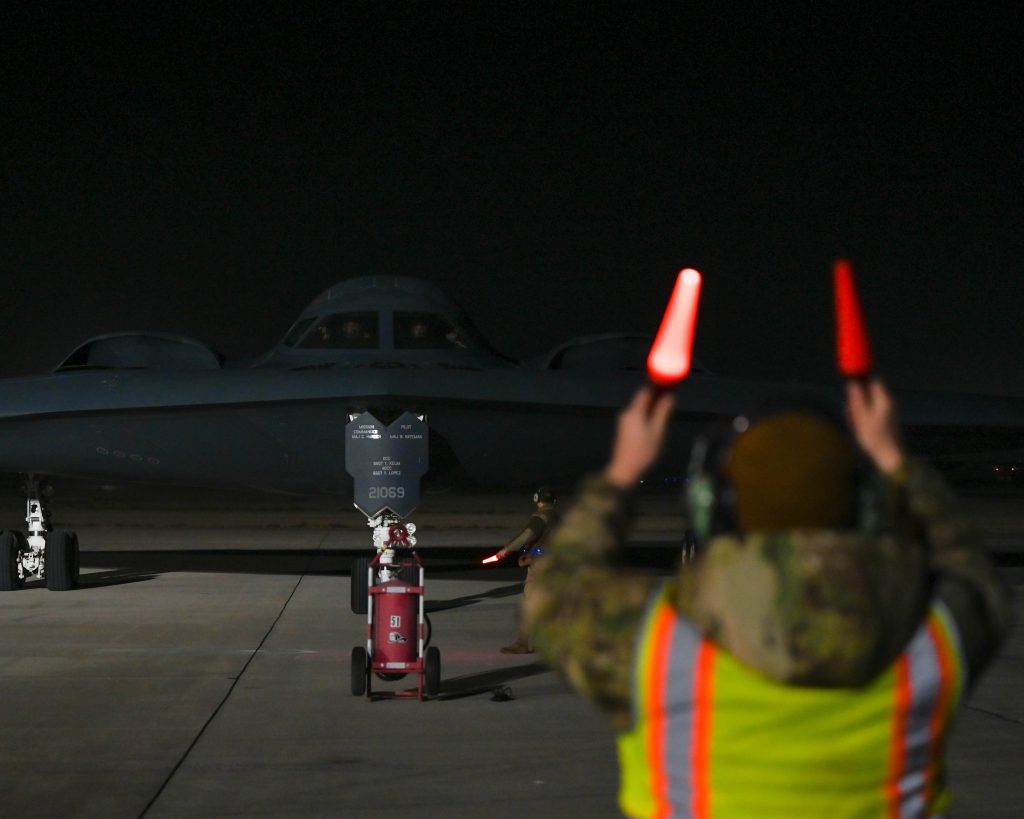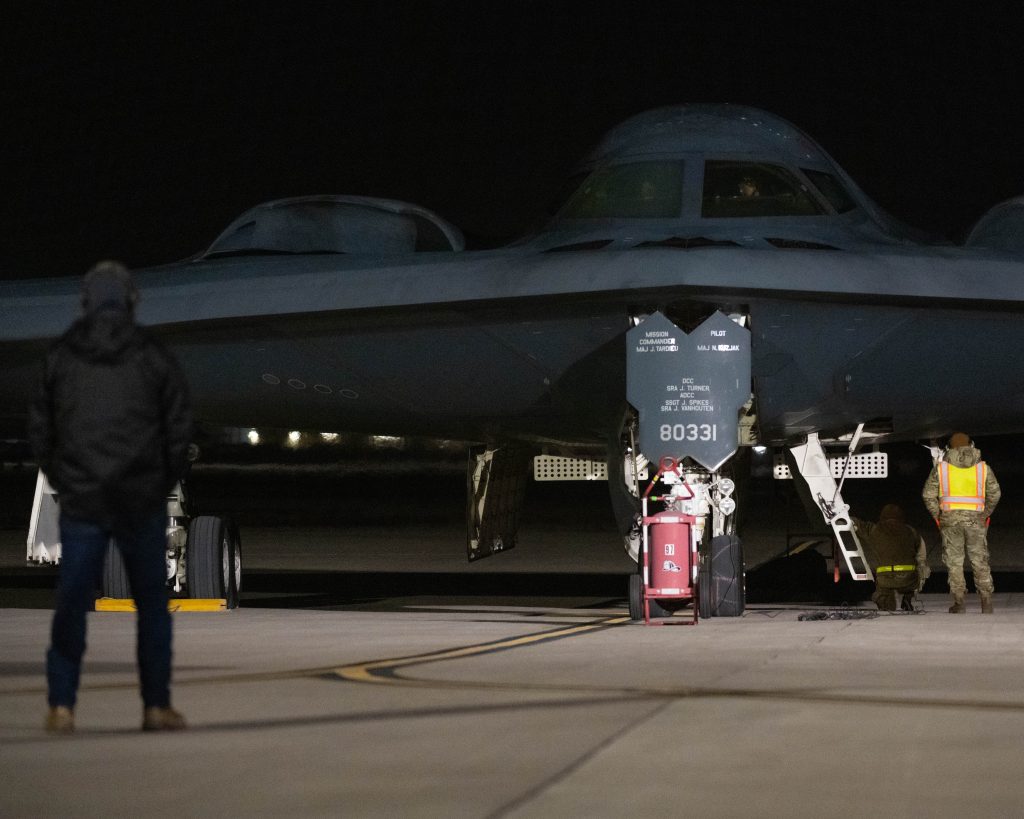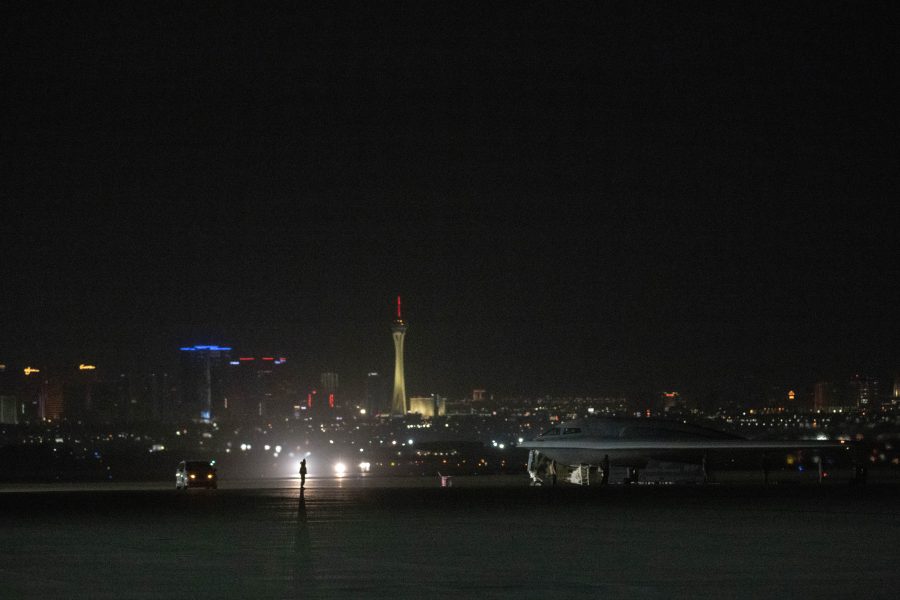Three B-2 Spirit bombers made their return for the first Red Flag exercise of 2024 at Nellis Air Force Base, Nev., this week, alongside the U.K.’s Royal Air Force and the Royal Australian Air Force.
More than 30 units and 2,000 personnel are participating in the air combat training, deemed by the participating allies as one of the “most advanced” and “toughest” training opportunities in the world.
The exercise kicked off Jan. 15 and will incorporate realistic, high-end combat scenarios through Jan. 26.
The B-2 Spirits will concentrate on increasing interoperability, training against scenarios involving a contested, degraded, and operationally limited environment, 2nd Lt. Lindsey A. Weichel of the 509th Bomb Wing told Air & Space Forces Magazine.
The stealth bombers, usually a regular presence at Red Flag in recent years, did not fly in last year’s first edition of Red Flag due to a safety stand-down—though the exercise virtually simulated the aircraft and crew members participated. The B-2 eventually returned for Red Flag-Alaska 23-3, flying deep into the Arctic Circle in August 2023.
This latest Red Flag exercise at Nellis will also involve:
- U.S. Air Force F-35 Lightning IIs
- U.S. Air Force F-22 Raptors
- Royal Air Force FGR-4 Typhoon fighters
- Royal Australian Air Force F-35As
- U.S. Navy EA-18G Growlers
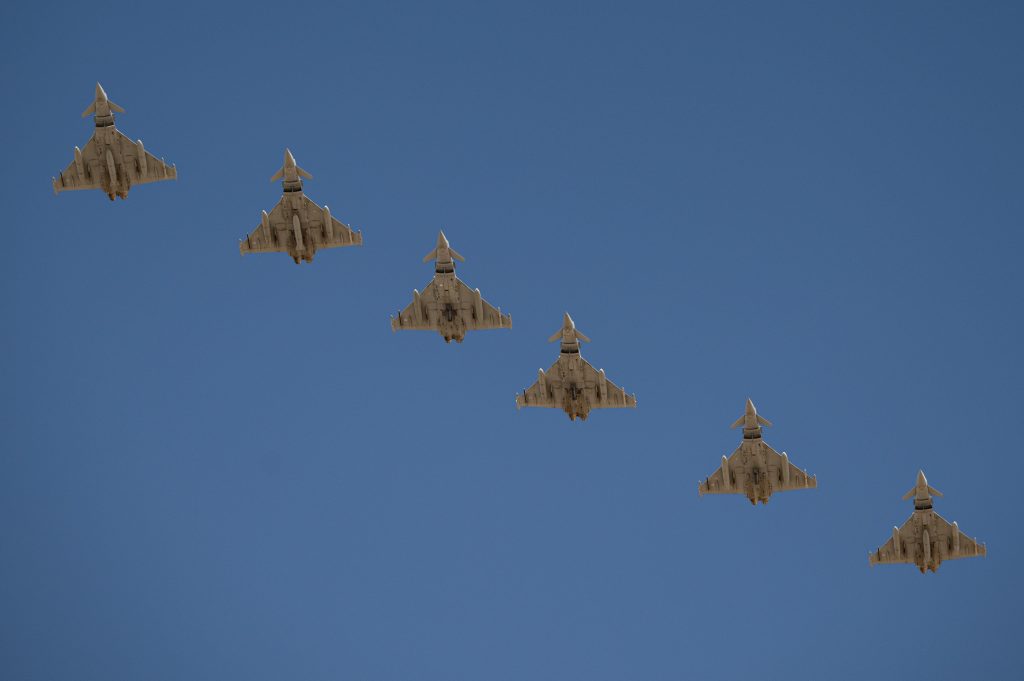
“Training prioritizes first timer’s combat missions, mission commander upgrades, integration and flag unique experiences that contribute most to readiness and partnering,” Col. Eric Winterbottom, commander of the 414th Combat Training Squadron, said in a release. He added that this training is vital for Airmen to operate independently to bolster the mission’s resilience and survivability.
Nearly 100 aircraft are departing the base twice per day, with some of them staying airborne for up to five hours. The training will see night launches taking place to simulate nighttime combat operations as well.
This iteration also marks the first participation of the Australian F-35As since the RAAF joined the exercise since 1980.
“Exercise Red Flag Nellis will test every facet of our F-35A capability, allow us to integrate with our American and British allies, and practice how we project force on combat operations.” Wing Commander Adrian Kiely, Commanding Officer of No. 3 Squadron of RAAF, said in a release.
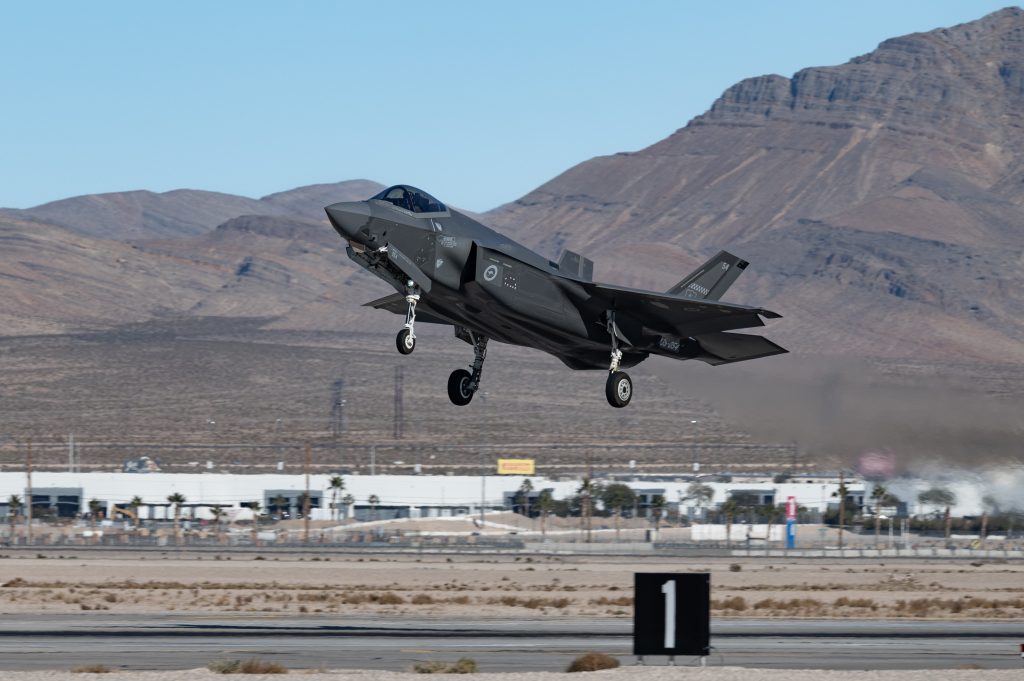
Established in 1975, Red Flag was initially designed to train Air Force pilots intensively in air combat sorties, drawing lessons from the Vietnam War. With the Pentagon focusing on China, the exercise has shifted to expand over the Pacific.
This year’s iteration aligns with the 2022 National Defense Strategy and focuses on deterring aggression, addressing challenges in the Indo-Pacific and Europe and building a joint force.
There are typically three Red Flag exercises per year: a U.S.-only session, one open to Five Eyes nations (U.K., Australia, Canada, and New Zealand), and another including a broader roster of global allies.
